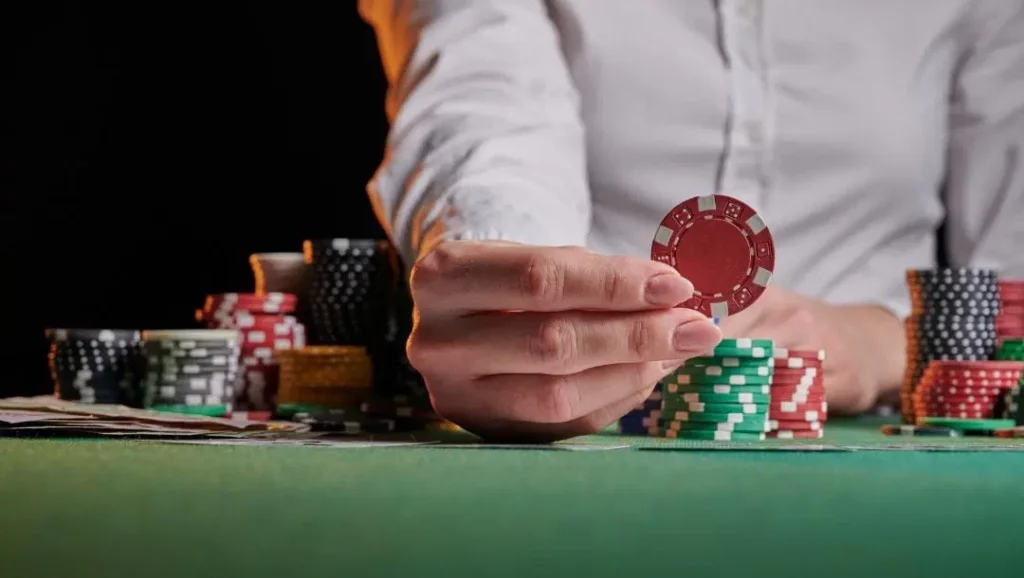Here are the most popular live casino games online
Whether you’re completely new to online poker or a seasoned pro, understanding the effects of rake on your bottom line is crucial. That’s why we’ve compiled this comprehensive guide to understanding the rake.
First of all, we explain what the term “rake” actually means before looking at how it’s calculated. We also review the different ways to take a rake in poker games and how the rake can impact your decision-making.
Rake Defined
Let’s start by answering one of the questions most frequently asked by newbies, what is a rake in poker? In short, it’s the fee levied by a poker room to cover operating expenses. You may also hear it described as the “vig,” “juice” or “drop.”
When playing cash games, taking a rake works in different ways, but the general idea is that a small portion of the pot is removed, or “raked.” You may, for instance, win a pot with a total value of $10, but if a 5% rake charge applies, you’ll have 50 cents deducted from your winnings. This is how the house makes its money.
Things are more straightforward with poker tournaments since there’s usually a fixed entry percentage charge in addition to the buy-in. For instance, a $10 sit-and-go tournament may be listed as “$10 + $1.” This means that all entrants must pay a total fee of $11, with $10 going towards the prize pool and $1 towards the rake for the house.
Is It Legal To Take a Rake?
Like any form of gambling, the laws depend on your location. But wherever poker is legal, it’s usually permitted for the house to take some sort of cut. After all, casinos and poker rooms are businesses, not charities.
That said, in order to protect the player, the regulator provides strict legislation to control exactly how much rake may be deducted. Generally speaking, raking at a home game is almost always against the law.
Calculating the Rake

Whether physical or online, different poker rooms have their own approaches to rake. Some keep things simple by charging a fixed percentage, while others extract set amounts that apply regardless of pot size. Yet others may deploy a hybrid of these two models.
Using BetMGM in New Jersey as an example, all No-Limit cash games up to $10/$20 are subject to a 1-cent rake for every 18 cents in the pot. So, a pot of $1.80 would result in a deduction of exactly 10 cents. Higher stakes games can be subject to a 5-cent rake for every 90 cents in the pot.
Limits and Exceptions
To stay competitive, most poker rooms place an upper limit on the rake. This tends to vary depending on the limits in play, with higher stakes games subject to a larger maximum deduction.
Continuing with the BetMGM New Jersey example, the maximum amount that can be deducted from any pot is $5 at the highest stakes, while at lower levels the rake is capped at just $1.
It’s worth pointing out that there isn’t always a rake in poker games. For instance, if the pot fails to reach a certain minimum size, it’s likely that no deduction will be made. It’s also common to see a casino or poker room with a “no flop, no drop” policy. As the name suggests, if the hand ends before you see a flop, no charge applies.
How Rake Is Collected
Regardless of how the rake is calculated, there are several different approaches to actually collecting it. Let’s take a look at the most common ones.
Dead Drops
A dead drop involves paying the rake before the cards are dealt. Whoever has the dealer button in front of them calculates whatever is owed and places their chips on the button for collection. This method is usually found in physical poker rooms.
Standard Pot Rake
This is the most popular way to collect the rake. Every individual pot is subject to a fee at the end of the hand before the money is handed over to the winner. In a land-based casino, chips are removed by the dealer and dropped through a collection slot. But online, the poker software handles everything automatically.
Time Collections
Most commonly seen in high-stakes games, time rakes are exactly what the name suggests. As soon as a predetermined period of time has elapsed — often 30 minutes — each of the players hand over a fee. Sometimes, a deduction will be made from the pot currently being played instead of a set amount per player.
How the Rake Affects Decision Making

Because rake leads to smaller than expected pots, it’s important to factor this into your decisions at the table. As a general rule, a higher rate of rake should lead to a tighter playing style. A marginal call might now become a fold, for instance.
A particularly important situation to consider is when chasing a draw. When calculating your pot odds, you must remember to deduct the rake from the potential winnings. Making calls that don’t pay the right price is a guaranteed way to lose money in the long run.
Rake also makes a huge difference to your approach in the big blind. Solvers show that you likely need up to 15% additional equity in order to defend your blind in raked pots.
Rakeback
Similar to casino cashback deals, it’s also possible to have a percentage of your rake paid back to you. Many poker rooms have a loyalty program, for instance. The more you play and the greater the amount of rake paid, the higher you’ll climb through the ranks. As you rise, the benefits become greater, often including rakeback rewards.
There are also third-party rakeback providers. These are affiliates who earn money by advertising online poker rooms. As a reward for their marketing efforts, they are paid by the companies they’re promoting; companies who, in turn, are happy to share a percentage of their revenue with new registrants by locking in rakeback deals.
Such arrangements come with different structures. The simplest deals feature a fixed percentage of whatever rake was paid during a given time period, which could be between 20 and 30 percent. Others are tiered and reward players who generate a higher rake percentage with better offers.



